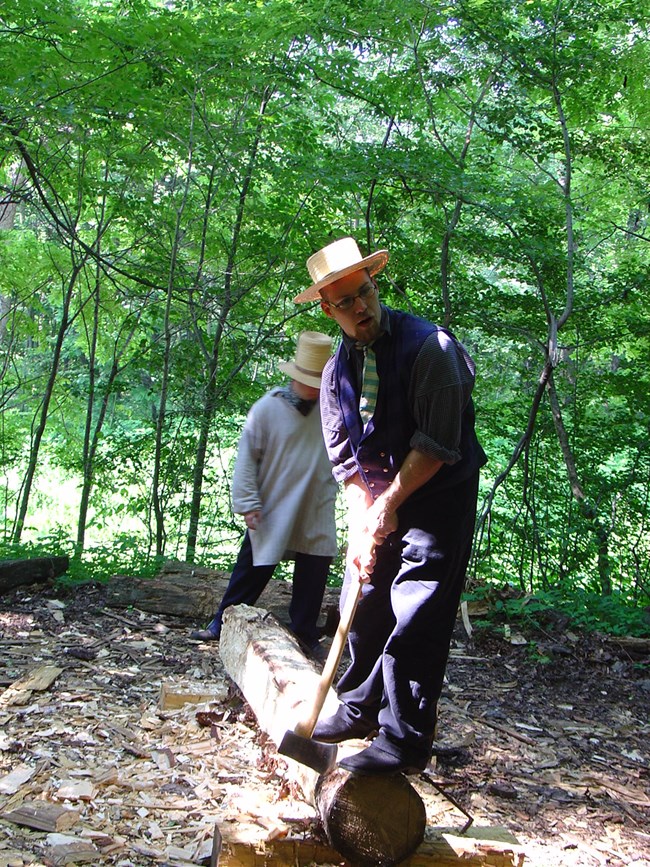
NPS Log Hewing The workers building the Portage Railroad had to hew logs from their round shape into flat 'stringers' or ties for the edge rails. First the tree was felled, then the sawyer switched to a broad ax. This flatter blade permitted the removal of layers of wood to shape the stringer into a square. A draw knife would then smooth the surface to make it easier to attach the rail. 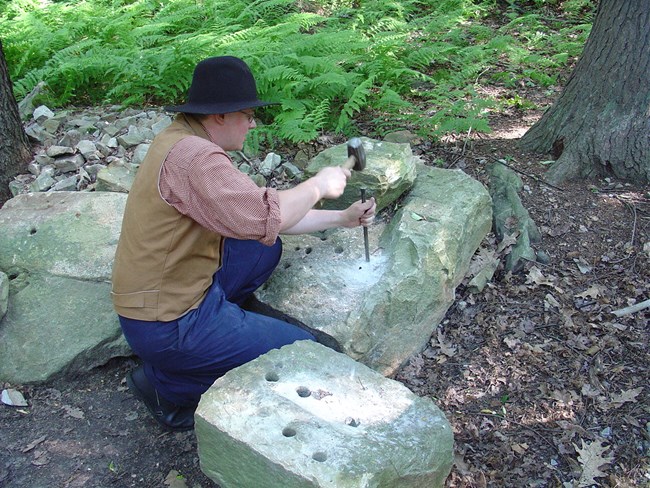
NPS Stone Cutting The stone 'sleepers' that were used as railroad ties on the levels were shaped on-site. Most were likely quarried near where they were installed as well. Using only a hammer and a chisel, skilled stonemasons shaped the raw rock into the sizes and shapes that were needed for the railroad bed, culverts, bridges, and viaducts. 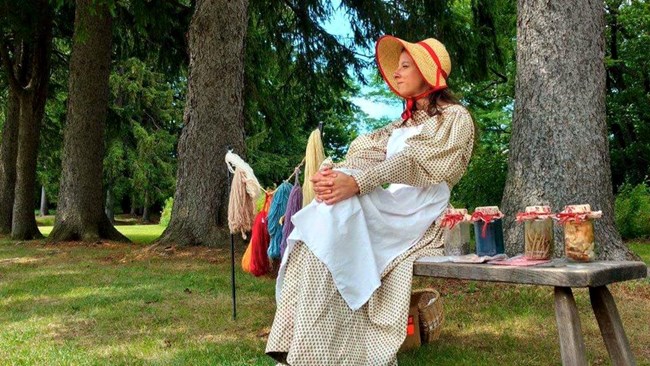
NPS Industrial Revolution Few enjoyed the immediate benefits of the Industrial Revolution more than the women of the time. Machine made cloth helped retire the spinning wheel and increased leisure time for other pursuits. New inventions such as iron cook stoves and new sources of basic materials such as food items made daily life easier in many ways. Some of the park demonstrations let you compare past practices with the contrasting new developing practices of the 1840s. 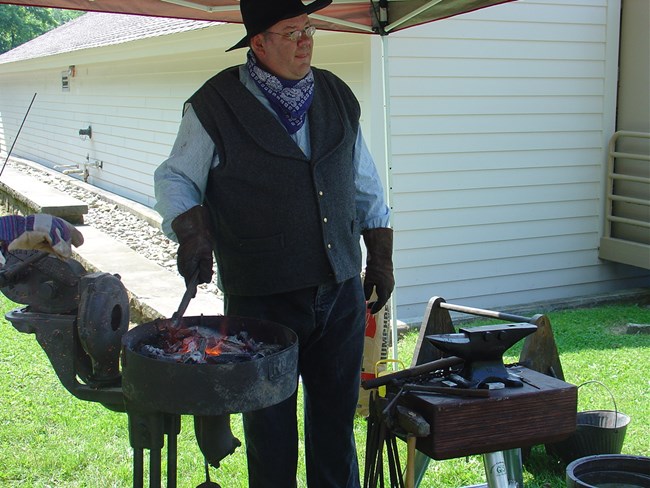
NPS Blacksmithing 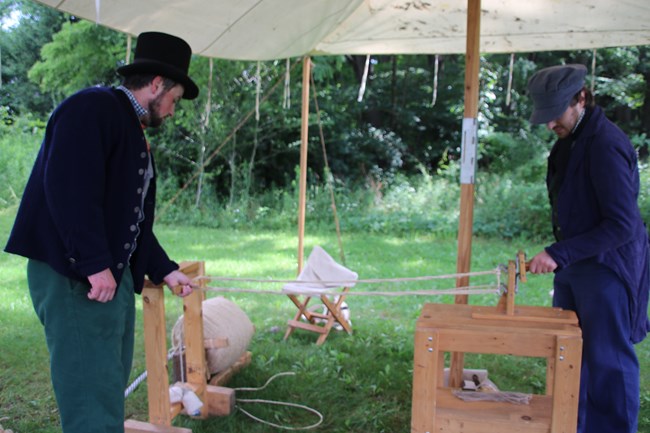
NPS Rope Making Young and old can learn how the hemp rope was made for operation on the Allegheny Portage Railroad. Each of the 10 Inclines had a hard wearing hemp rope approximately one mile in length. Even once the hemp rope was replaced its successor was 'wire rope' made in much the same way. This fun hands-on demonstration actually produces real rope that can be taken home with the participant. |
Last updated: May 10, 2022
